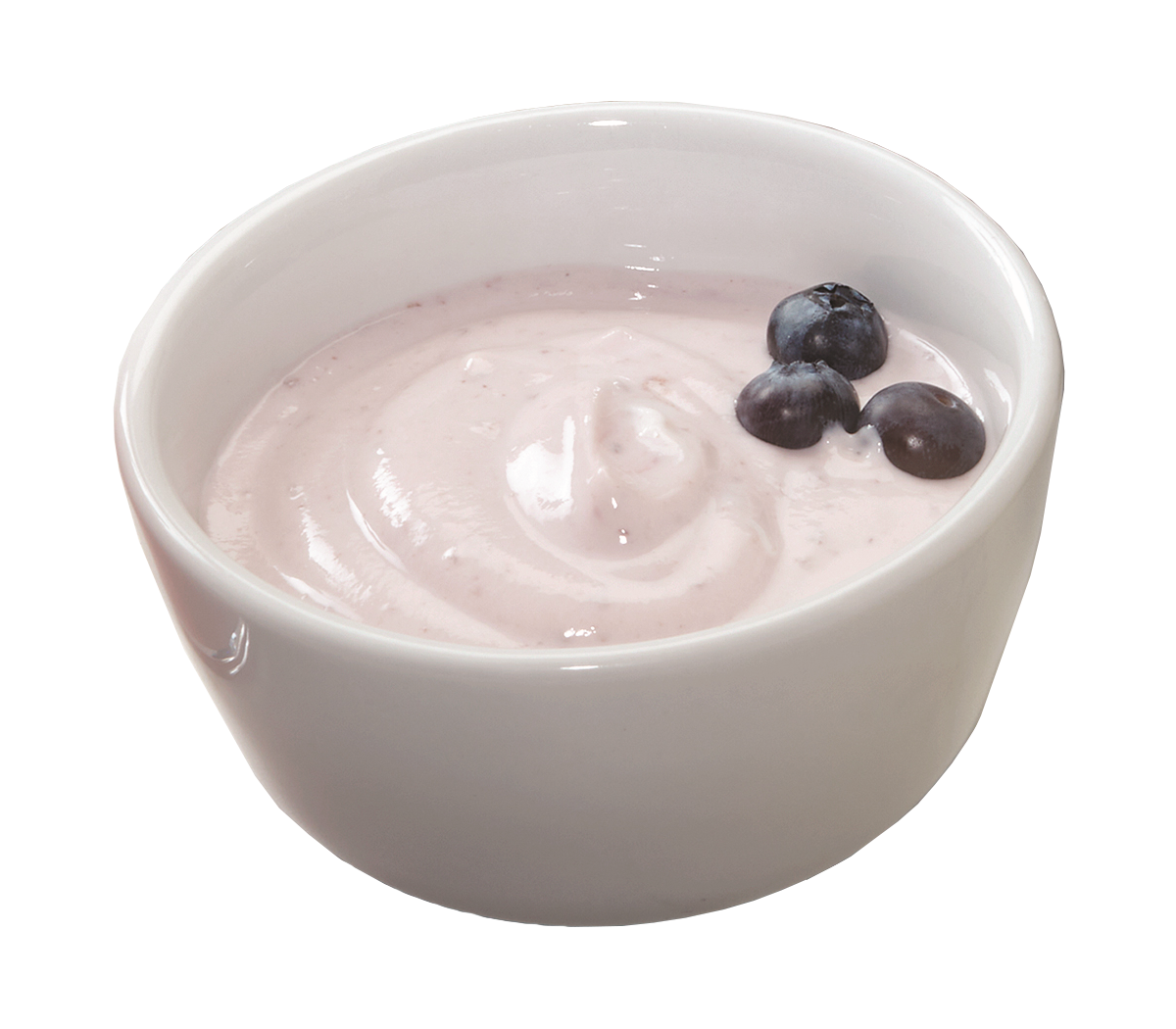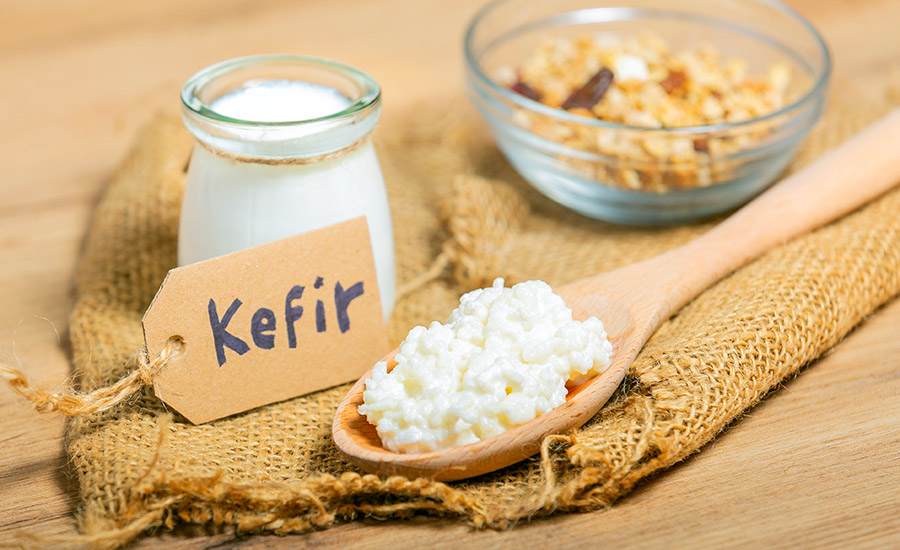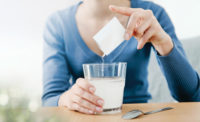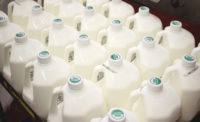The need for prebiotics — as well as probiotics and postbiotics — continues to grow in the dairy marketplace.
Arizton’s latest research report shows that the global prebiotics market will grow at a compound annual growth rate (CAGR) of 11.37% from 2023 to 2029.
"The growing awareness of the health benefits of prebiotics, such as improved gut health and overall digestive function, and increased consumption of functional dairy products is anticipated to boost the growth of the global market," stated Nexira. "There is a growing consumer focus on holistic health, particularly gut health, which aligns with the increasing interest in 'biotics (probiotics, prebiotics, postbiotics, and Synbiotics). This interest is driven by the recognition of the role these ingredients play in improving gut health and the health of other body systems. Specifically, prebiotics, which include certain dietary fibers and other non-fiber substances like polyphenols, are selectively utilized by host microorganisms to confer health benefits. These benefits include improving calcium absorption, helping regulate blood sugar, nourishing beneficial gut bacteria, and aiding in laxation."
’Biotics may also receive a boost from research and may go beyond the gut health and immune health benefits discussed in-depth throughout this story. For example, a recent study, conducted by Jackson et al., demonstrates that the intake of the prebiotic dietary fiber oligofructose alone, or in combination with the human milk oligosaccharide 2’fucosyllactose, promotes a significant increase in Bifidobacteria in the gut and can result in substantial improvements in mood in healthy adults with mild to moderate feelings of anxiety and depression.
The results showed that at the end of the four-week intervention period, those participants taking the prebiotic oligofructose on its own, or in combination with 2’fucosyllactose, experienced significant increases in beneficial gut bacteria, including Bifidobacterium, Bacteroides, Roseburia and Faecalibacterium prausnitzii, compared to the control group. Additionally, those taking oligofructose on its own or in combination with 2’fucosyllactose also significantly outperformed the control group in improvements in several mood state parameters.
In comments made to Dairy Foods, Denisse Colindres, nutrition communication manager North America at Parsippany, N.J.-based BENEO, called this study a “breakthrough.”
“Two out of three consumers across the globe already see the importance of their gut on mood, saying that their digestive health influences their mental well-being and stress levels. Thanks to the gut-brain axis, important mood parameters can be influenced via microbiota modulation,” Colindres explains. “With mental health disorders such as anxiety and depression an increasing burden on health systems globally, using a diet approach that positively influences microbiota using gut-friendly food is an attractive proposition for decreasing public health costs and supporting healthy living.
“In addition to the many benefits: digestive health, weight management, fiber enrichment, etc., these findings will further support manufacturers in their efforts to promote the health of their products containing the scientifically proven prebiotic fibers inulin and oligofructose,” she continues.
Ingredients providers beyond BENEO also stress the importance of these study results. “The study by Jackson et al. significantly advances our understanding of the relationship between dietary fibers, specifically prebiotics, and mood improvement,” says Joe O’Neill, vice president of sales and business development, A&B Ingredients, Fairfield, N.J. “This research demonstrated a connection between the consumption of prebiotic fibers and mood improvement in adults experiencing mild to moderate symptoms of anxiety and depression.

“Given the growing consumer interest in health and nutrition, effectively marketing these benefits will be crucial for food and beverage brands looking to differentiate their products,” O’Neill adds. “Brands can effectively reach health-conscious consumers by marketing these benefits with science-backed claims, o-pack messaging, consumer education, and leveraging current trends towards natural and functional foods.”
Jenn Adams, director of ingredient technology and applications for Fenton, Mo.-based IFPC, echoes similar sentiments: “By effectively communicating these mood-enhancing benefits, manufacturers can meet the rising demand for products promoting holistic well-being. Also, some recent product development trends support food as medicine versus taking supplements plus vitamins. Consumers want their food to provide benefits that go beyond nutrition, including mental well-being. Good examples have been the recent launch of products that feature botanicals plus adaptogens that are linked to reduction of stress.”
More research
Beyond stress relief, another study, released in February, concludes affordability and gut health are positioned to take center stage as leading drivers of consumer purchasing decisions in 2024, according to Today’s Dietitian and Pollock Communications’ “What's Trending in Nutrition” survey of 564 Registered Dietitian Nutritionists (RDNs).
As consumers navigate recent increases in grocery prices, RDNs predict that affordability will be an important driver of consumer purchases. Research into the benefits of a healthy microbiome, from mood to weight management, has sparked interest in foods that support gut health. RDNs predict the top purchase drivers in 2024 will be foods and beverages that:
- Are affordable and value-based (65%)
- Boost gut health (60.4%)
- Are easily accessible and convenient (59.8%)
- Support immunity (52.6%)
“The 2024 superfoods and top purchase drivers demonstrate that gut health, while long discussed, is officially making its way into the mainstream among consumers, with no sign of slowing down,” says Mara Honicker, publisher of Today's Dietitian. “With the survey in its 12th year, we are excited to continue to share insights from experts in food and nutrition, at a time where immunity is strongly informing trends.”
What’s the difference between the fibers?
Before returning to the important role they play in gut and immune health, experts differentiate between prebiotics, probiotics and postbiotics. Although the names of all three ingredients sound similar, they are not the same. Prebiotics are non-digestible fibers that nourish beneficial gut bacteria, promoting digestive health and aiding mineral absorption, Adams explains.
“Probiotics are live beneficial bacteria that support gut microbiota balance, enhance immune function and alleviate digestive issues,” she continues. “Postbiotics are metabolic byproducts of probiotics, exerting immune-modulating and anti-inflammatory effects, contributing to overall health.

“Each component can be integrated into various product formulations, including dairy, supplements and functional foods, to enhance gut health and well-being,” Adams adds. “Synergistic combinations of prebiotics, probiotics and postbiotics cater to specific health needs and drive innovation in product development.”
’Biotics each play a distinct role in supporting gut health and immune function, O’Neill concurs. “In simple terms, prebiotics nourish beneficial bacteria, while probiotics are the beneficial bacteria introduced into the gut. Postbiotics offer health benefits through their metabolic byproducts. Together, these components contribute to maintaining a healthy gut flora balance and supporting overall well-being,” he says.
Growing demand
Demand for all of these fibers is strong, based upon consumer desire to proactively manage and improve health, encompassing digestive health, immune support, weight management, and mental well-being, Adams notes, adding “as scientific research continues to uncover the multifaceted benefits of fibers, consumer interest and demand for these products are expected to continue to grow.”
Vaughn DuBow, global director of marketing for Microbiome Solutions at Chicago-based ADM, notes that research indicates that while more than 95% of consumers fall short of the recommended daily fiber intake, nearly 80% of consumers believe fiber is important and try to include it in their diet. “Plus, consumers look to dietary fiber solutions to support their different wellness goals, from digestion to weight management and satiety. Because of this, demand has increased for products containing high fiber content,” he maintains. “Consumers’ association with satiety and fiber solutions is worth noting, especially at a time when there’s growing focus on GLP-1, a hunger hormone.”

Consumers are becoming savvier about the science of the gut microbiome, and will be looking for ingredients that support the growth of beneficial bacteria linked to specific health benefits such as cognition or immunity, continues Hannah Ackermann, RD, director of marketing & communications, COMET, based in London, Ont., with its U.S. Headquarters in Schaumberg, Ill.
“This will have a positive impact on the prebiotic category as consumers better understand the ingredients’ efficacy and proven benefits,” she says. “The majority (85%) of consumers are now aware of prebiotics, and more than one-fourth have purchased products containing prebiotics, according to the 2022 ITC Insights Consumer Supplement User Prebiotic Category report. The same report reveals that consumers perceive prebiotics as extremely effective. This positive perception demonstrates a robust opportunity for brands to highlight the diversity of prebiotics on the market and their specific benefits.”
Gut health equals immune health
As mentioned previously, gut health can directly impact immune health. But this is perhaps not so obvious to those outside the dairy industry. How are the two connected?
“Did you know that the gut is the largest single immune organ in the body? So, a healthy gut promotes food and digestive health and supports a strong immune system,” stresses A&B Ingredients’ O’Neill. “Prebiotics, nondigestible oligosaccharides, essentially feed the probiotics, producing a range of short-chain fatty acids that nourish the digestive tract and support healthy immune function. …Scientists continue to discover how immune and gut health are closely connected. The gut microbiome plays a critical role in regulating immune health.”
Dairy products can play a huge role in supporting both gut and immune health by delivering a combination of probiotics, prebiotics, and essential nutrients, O’Neill continues. “Yogurt and kefir are among the top dairy products for delivering probiotics. They naturally contain live and active cultures such as Lactobacillus and Bifidobacterium, which can help maintain a healthy gut microbiome balance,” he states.
Good bacteria plays a critical role in immune function, adds Thom King, CEO and chief food scientist at Portland, Ore.-based Icon Foods. “The metabolite butyrate that builds the mucosa on the inner lining of the gut has an anti-inflammatory effect, which supports the immune system,” he notes. “Butyrate, acetate, propionate: these have been shown in peer-reviewed studies to have an immune modulating effect that helps the body regulate the responses and reduce inflammation.”
Approximately 70% of the immune system resides in the gastrointestinal tract, notes Robin Hesdahl, commercial director, NutriLeads BV, The Netherlands. “Armies of innate immune cells and lymphocytes line the mucosal surfaces throughout the mouth, esophagus and intestines. The gut is also home to trillions of microorganisms collectively known as the microbiome. These include bacteria, viruses, fungi and other microbes.”

Hesdahl also stresses how important dairy products are for supporting gut health and immunity. “However, there is an untapped opportunity for dairy products fortified with prebiotics. Because dairy is often consumed daily, products such as milk, yogurts and cheeses are wonderful for delivering functional ingredients that provide extra support immune and gut health,” Hesdahl suggests. “The key is finding the right functional ingredients: clinically proven, small daily serving requirements, and favorable formulation properties.”
As an example, Hesdahl mentions NutriLeads’ BeniCaros, which he suggests is a “game changer” because the precision prebiotic is dairy compatible. “Clinical research demonstrates the BeniCaros trains the innate immune system to respond smarter, faster and stronger,” he explains. “BeniCaros also promotes the growth of beneficial gut bacteria and production of short-chain fatty acids (e.g., acetate, propionate and butyrate) that play a crucial role in immune, gut and overall health.”
Ingredient introductions
Ingredient suppliers clearly see the benefits of pre-, post- and probiotics and are launching several of these fibers.
For example, new research, which is currently being submitted for publication, demonstrates ADM’s ES1 postbiotic may support overall gut and digestive health, DuBow reveals.
“The new study was a randomized double-blind placebo-controlled human clinical trial, which included 200 adults with mild-moderate IBS-D, and a daily intake of the ES1 postbiotic was administered over a period of 84 days,” he explains. “The group taking the ES1 postbiotic led to a three times better IBS-SS score in participants compared to the placebo group. All secondary outcomes were also achieved. There was an improvement in the quality of life (based on the IBS-QoL) score compared to placebo, a significant reduction of occasional diarrhea versus placebo, a significant reduction of ‘mean APS score’ and significant reduction in stress versus placebo.”
Multi-strain supplementation and formulating different microbial strains together are unveiling opportunities for even greater specialized support, DuBow continues. “For instance, our recently introduced Active Lifestyle Formulation combines ES1 with BPL15 and BPL4 (Lactobacillus casei CECT9104). The formulation has clinically documented results showing that it supports certain biomarkers related to post-exercise oxidative stress, indicating its potential to support aspects of recovery.”
Nexira offers inavea PURE ACACIA, whose prebiotic effects are supported by more 40 published studies, highlighting their role in promoting gut health, immunity, and overall well-being, according to the company. "Nexira's commitment to sustainability and quality ensures that it remains a premium organic ingredient with proven health benefits. By incorporating it into various applications like functional beverages, nutritional powders, and high-fiber snacks, companies can offer products that not only taste great but also support digestive health and immunity. Human studies have reported significant prebiotic activities from as little as 10g/day of it."
Nexira's inavea BAOBAB ACACIA not only supports digestive comfort but also aligns with the growing consumer demand for sustainable and ethically sourced products, the company added. It is a "unique blend of two African botanicals, offering a synergistic prebiotic effect that contributes to the balance of microflora and overall gut health," the company stated. "This ingredient is organic, FODMAP-friendly certified, and part of Nexira's commitment to achieving a carbon-neutral footprint for the inavea brand."
A&B recently added prebiotic fiber (inulin) to its portfolio. “Chicory fiber (inulin) is a non-GMO, all-natural prebiotic with digestive and functional benefits, like enhanced creaminess in applications where mouthfeel is important,” O’Neill relays. “Chicory fiber has a clean taste without offnotes and, therefore, doesn’t require masking solutions. Chicory fiber can be used to reduce the offnotes associated with high-intensity sweeteners in reduced-sugar formulations.”
Along with functional prebiotics, A&B Ingredients offers vegan probiotics, PA5051. “This plant-based probiotic is proven to reduce pro-inflammatory biomarkers, which could benefit people suffering from long COVID-19 symptoms,” he adds.
ICON Foods recently added several new options to its prebiotic fiber ingredient lineup: FibRefine and Prebiotica. PreBiotica Inulin (chicory root), PreBiotica JA Inulin (Jerusalem artichoke), PreBiotica AG Inulin (agave), PreBiotica P95 FOS (fructooligosaccharides) and FibRefine P90 Soluble Tapioca Fiber (a resistant dextrin from cassava root). “All have different functional benefits, depending on the application,” notes King. “For example, our PreBiotica Jerusalem Artichoke Inulin has excellent gelling properties and is well suited for cheeses and spreads. It also holds up well in high temperatures. Our FibRefine Soluble Tapioca Fiber (made from cassava root) is ideal in dense beverages like smoothies and shakes.”
However, if end users consume a prebiotic or high-fiber product with inulin and have a bad digestive experience, it will likely turn them off the product for life, stresses Ackermann. “The phenomenon is widespread with sweet or savory items supplemented with inulin. Due to the products’ likeability, consumers will indulge over the recommended serving size suggestion and experience bloating, pain and other negative symptoms.
“Fortunately, a new class of premium prebiotics is coming to market with better tolerability to address these concerns. For example, COMET’s Arrabina is an Arabinoxylan prebiotic fiber upcycled from wheat crop leftovers. Arabinoxylan is a hemicellulose polysaccharide fiber with clinically proven prebiotic and blood glucose metabolism benefits,” Ackermann reveals.
BENEO has added Orafti Organic, an organic variant of its popular chicory root fiber. “Just like BENEO’s conventional chicory fiber ingredients, Orafti Organic enables manufacturers to add a source of a proven prebiotic fiber plus organic credentials,” says Kyle Krause, BENEO’s regional product manager for Functional Fibers and Carbohydrates, North America. “The organic variant can improve taste and texture, while also allowing for fat and sugar reduction in many applications, including dairy.”
Future formulations
The future holds tremendous promise for pre-, post- and probiotics. “We see postbiotics and spore-forming probiotics as the next frontier of personalized nutrition, particularly for supporting functional dairy foods and beverages,” ADM’s DuBow notes. “For instance, we tap the heat-treated postbiotic versions of our BPL1 and ES1, as well as our spore-forming probiotic DE111 to assist dairy brands in creating innovative offerings. These solutions are helping spearhead more development of foods and beverages that incorporate ‘biotics and can easily work within consumers’ everyday routines.”
Probiotics and prebiotics are an excellent opportunity to create value-added products that can meet the needs of today’s health-conscious consumers,” states A&B Ingredients’ O’Neill. “Companies have started to market products containing both pre- and probiotics, known as SYNbiotics, capitalizing on the synergistic effect and supporting gut health and immune function,” he says. “The health and nutrition trend is not going away. Consumers will maintain their interest in products that can satisfy their dietary needs. With continued scientific research and science-baked claims, there will be more opportunities to market nutritious and health-supporting dairy foods.”
In the future, experts suggest many new formulations, particularly as food technologists and food scientists become more educated on how to use prebiotic fibers in conjunction with probiotics. According to King, “[A] lot of that has to do with fiber stacking and how to maximize the amount of fiber that you can drop into a formula without triggering a negative GI impact,” he states. “The solution is to stack different types of fibers — inulin/FOS and soluble tapioca fiber (cassava root fiber) — to both enhance their prebiotic effect and achieve a higher fiber count on the NFP. This works as the former is a saccharide and the latter a maltodextrin, with different chain lengths and slightly different metabolic pathways within the microbiome.”
Both IFPC’s Adams and NutriLeads BV’s Hesdahl note that changing formulations and consumer education are both vital for the future of ’biotics.
“In the future, formulations of pre-, pro-, and postbiotics may become more targeted, personalized, and innovative, with advanced delivery systems and combination products,” Adams maintains. “To educate consumers effectively, clear labeling, consumer-friendly information, healthcare professional recommendations, scientific evidence, and consumer testimonials are crucial. These strategies help consumers understand the benefits of pre-, pro-, and postbiotics and make informed choices for their health.”
Innovation with ’biotics will continue, and we will see more functional foods and beverages offering immune, gut and other health benefits, Hesdahl predicts.
“Dairy is ideally suited for these added benefits because it is consumed on a daily or regular basis. The winning ingredients will be those that are backed by strong science and have the best formulation attributes,” Hesdahl relays. “Educating consumers about product benefits is vital for success. Overall consumer awareness of both probiotics and prebiotics is high at 84% and 57%, respectively, according to FMCG Gurus. Consumers may not understand the complexities of the gut microbiome, but they know that nourishing beneficial gut bacteria is essential to their overall health. Dairy companies can drive home this point and highlight the added benefits of their products.”
“According to HealthFocus International global trends studies (from 2018, 2020, and 2022), in the Americas, interest in prebiotics grew from 43% in 2018 to 61% in 2022, a significant increase,” Krause states. “We can conclude that as even more information becomes available to consumers about the positive impacts of fiber on the gut microbiome, the interest in digestive health ingredients in beverages and other delivery mechanisms will continue to increase.”




